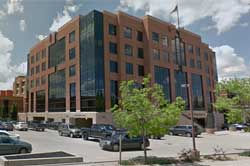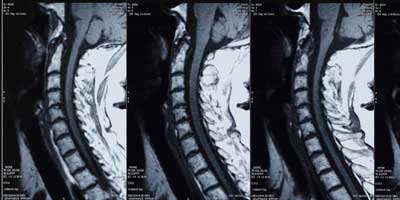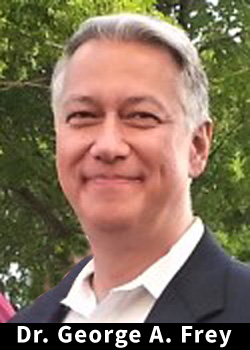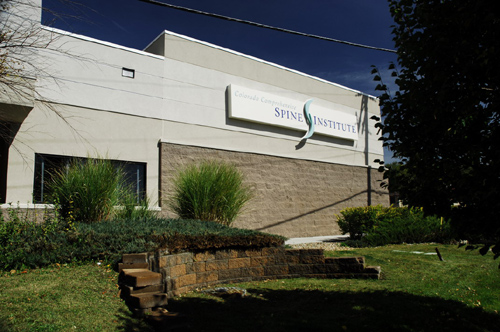Locations

Fax: (303) 762-9292

Nonoperative Treatment: Physical Therapy

Physical Therapy (PT), or functional rehabilitation, helps patients improve and maintain functional abilities needed for activities of daily living. PT includes:
- Passive therapies: Treatment that does not require patient participation, such as spinal manipulation, myofascial release, or ultrasound.
- Active therapies: Therapeutic exercise to increase flexibility, build strength and endurance.
- Biomechanics: Posture correction and learning how to move properly and safely.
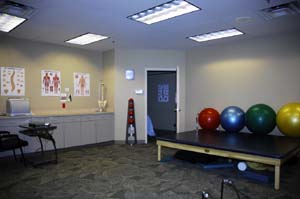 Dedicated Physical Therapy Department
Dedicated Physical Therapy Department
Passive therapies include:
- Manual Therapy - Manipulation and Mobilization Manual therapy includes manipulation and mobilization. This involves restoring and increasing mobility, such as range of motion to stiff joints and alleviating pain. Manipulation is a specific and controlled quick movement to release a joint so it returns to correct position. Manipulation and mobilization may help reduce muscle spasm contributing to spinal nerve irritation.
Prior to manual therapy, a passive therapy may be administered. Passive therapy may include application of heat, ultrasound, and/or electrical stimulation. These therapies warm and relax soft tissue and allow joints to be more easily manipulated.
- Electrical Stimulation - Transcutaneous Electrical Nerve Stimulation (TENS) Electrical stimulation or TENS delivers a painless electrical current through the skin to specific nerves. The current produces mild heat that helps to relieve stiffness and pain and may improve range of motion. This treatment is noninvasive, with no known side effects. It may be used to control acute pain and chronic pain.
- Myofascial Release - Fasciae are sheaths of connective tissue that support muscles, bones, and organs. Spinal stress from poor posture or injury may cause fascia to constrict or tighten. As the fascia constricts, muscles and bones may be pulled out of place and cause pain. Using their fingers, palms, elbows and forearms, physical therapists firmly and gently stretch the fascia.
- Ultrasound is a common noninvasive therapy used to treat back and neck pain, tendon and ligament injury, muscle spasms, joint problems and other spine-related conditions.
The practitioner applies gel to the patient’s skin to help transmit the ultrasound waves into underlying tissues. The ultrasound probe is gently swirled over the area. Ultrasound uses high-frequency sound waves to deliver heat deep into tissues, such as muscles. Ultrasound promotes circulation and healing, relaxes muscle spasm, decreases inflammation, and helps alleviate pain. - Ice and Heat Therapies - Cold treatments are never applied directly to skin, because excessive cold can injure skin tissue. A barrier, such as a towel, is placed between the skin and the cold source. Ice helps to reduce blood flow thereby decreasing swelling, inflammation and pain.
Heat therapy may include a moist heat pack with protective skin barrier and ultrasound. Moist heat increases blood circulation important to delivering healing nutrients and waste removal. Heat helps to relax stiff and sore muscles.
Active therapies include:
- Aquatic Therapy (Hydrotherapy) - Patients with osteoarthritis, rheumatoid arthritis, spinal stenosis, back and neck pain, and other spinal disorders may benefit from aquatic therapy. Treatment often occurs in a heated tub or pool and addresses impaired flexibility, mobility, coordination, weakness, weight-bearing intolerance, and pain. Warm water relaxes muscles. The buoyancy of water enables joints to be moved without excessive stress. Often, what a patient is unable to do on land can be done in water.
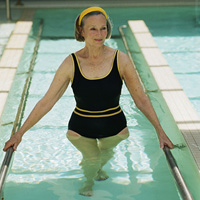
- Therapeutic Exercise - Everyone can benefit from therapeutic exercise. The physical therapist develops an individual program to meet the patient’s special needs. Benefits often include:
-Improved flexibility
-Builds strength, tones muscles
-Helps relieve stiffness
-Better balance, coordination, and sleep
-Stimulates the cardiovascular system
-Improves pain
Prior to therapeutic exercise, a passive modality is often administered followed by a period of pre-exercise warm-up activities. Warm-up may include walking on a treadmill or stationary cycling.
Biomechanics
Physical therapists teach patients how to attain and maintain good posture to protect the spine from unnecessary stress and strain. Patients learn practical skills such as how to lift, reach, carry, stand, sit, and get in and out of a car
Conclusion
Our physical therapists are committed to improving each patient’s health and well-being. We believe a critical part of each patient’s return to health and activity is a personalized rehab program that provides patients with tools to prevent a future spine problem.



